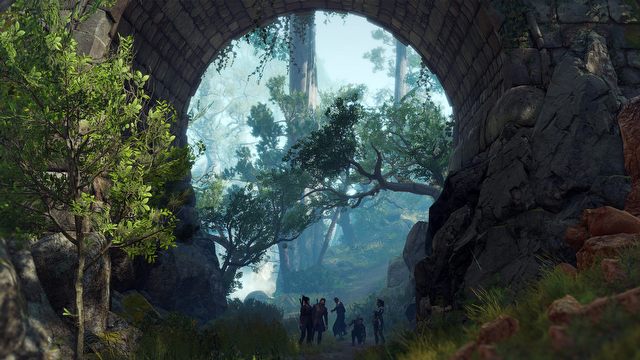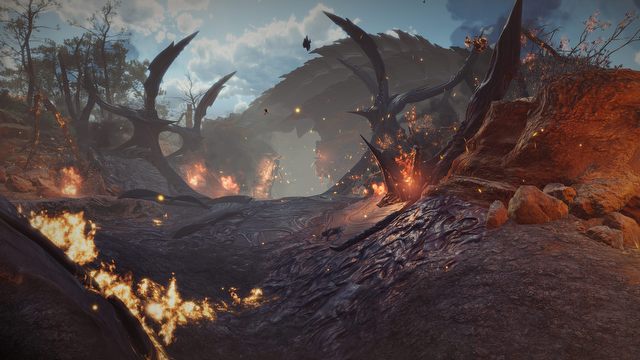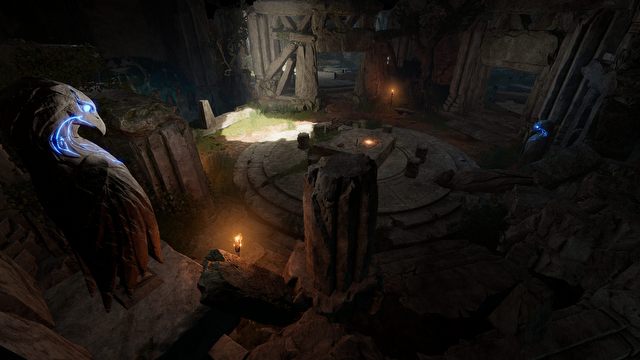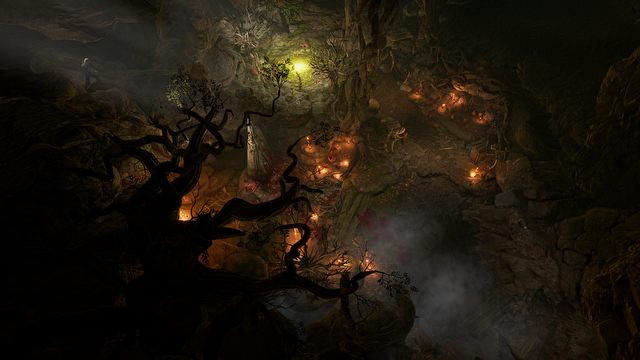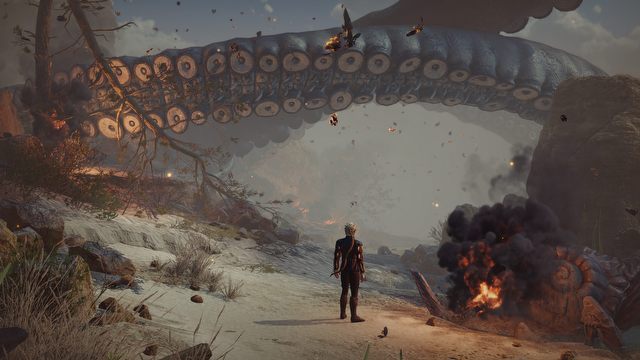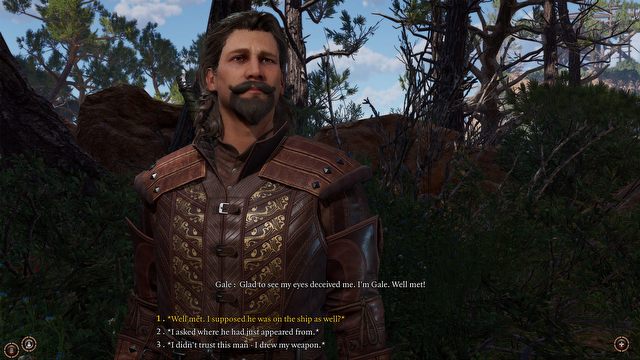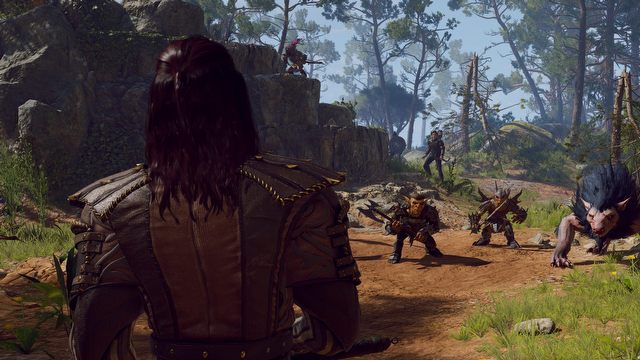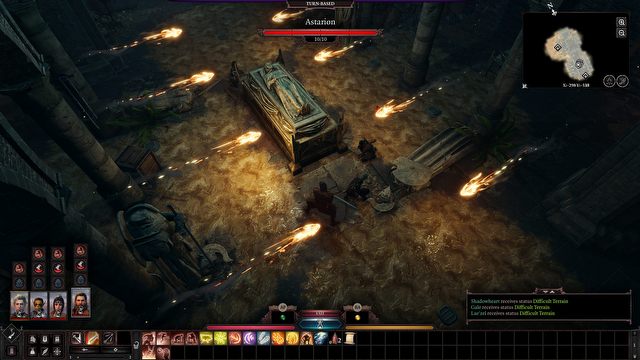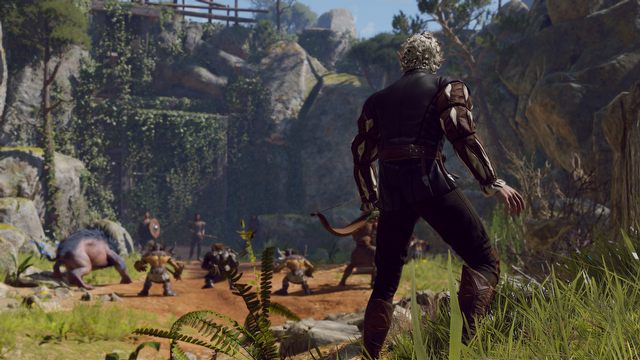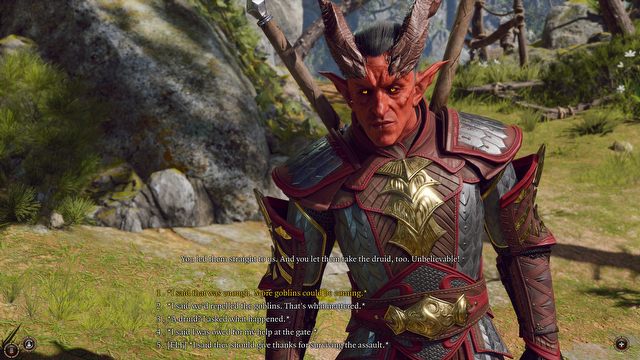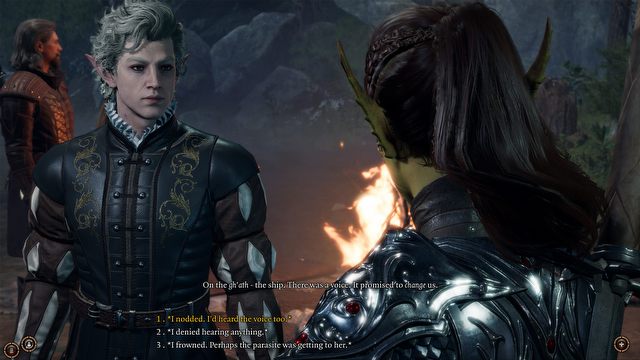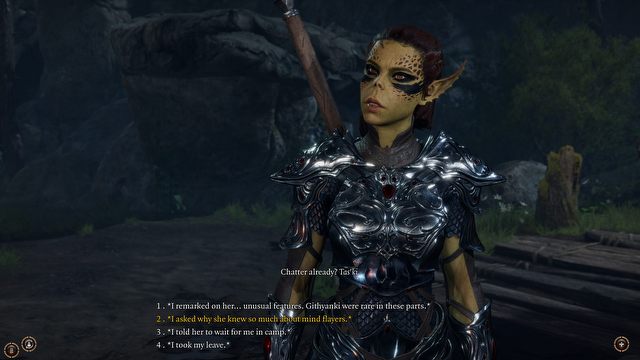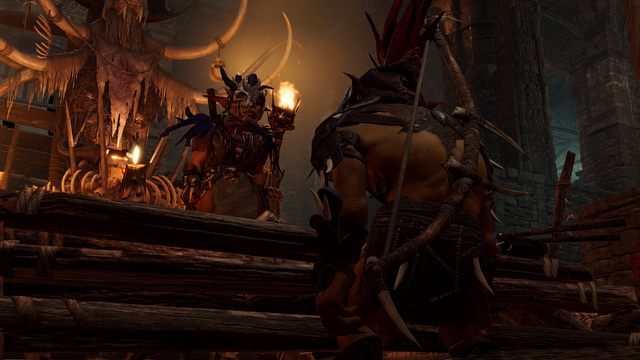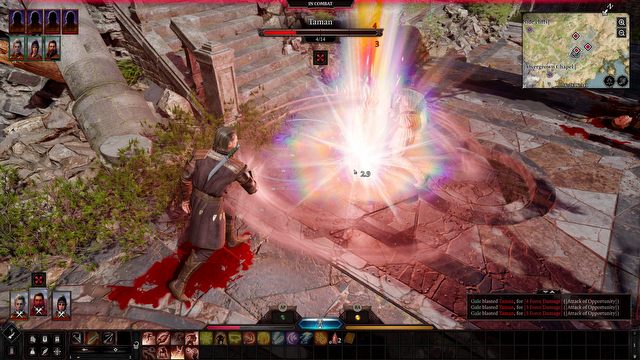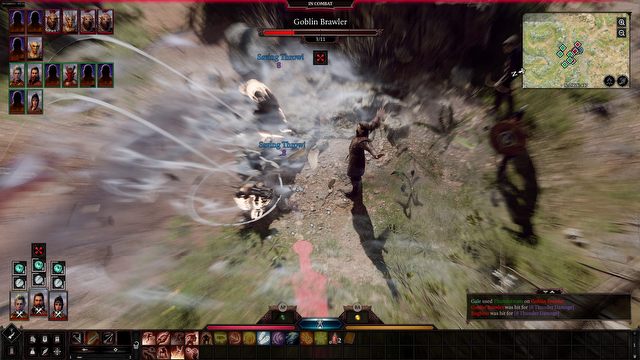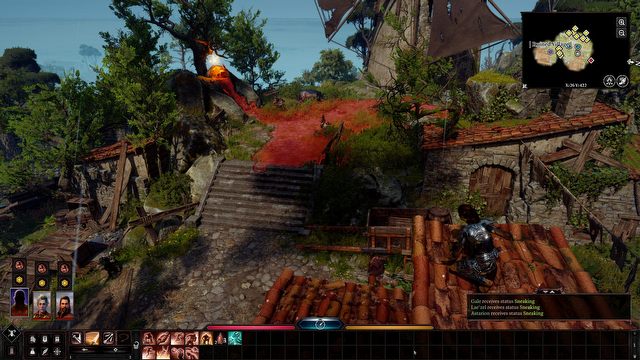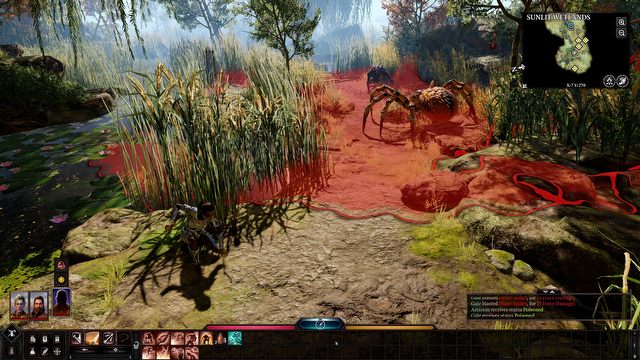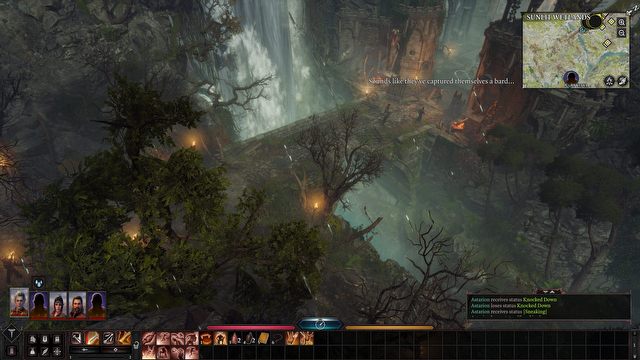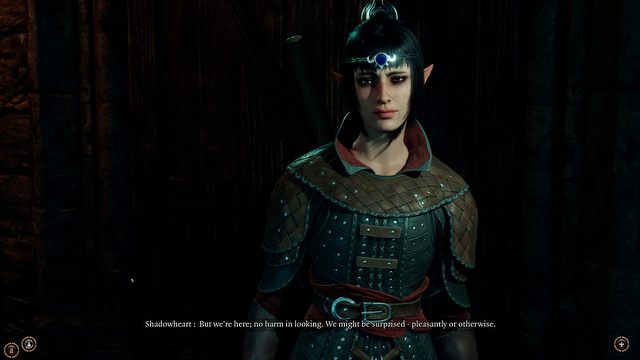Baldur's Gate 3 Preview – Just Let Me Gather the Party!
Do you still remember the classic Baldur's Gate? Whether you're a veteran or an RPG neophyte, Larian's latest production is a game you cannot miss.
Bulgur groats remind mi of fantasy more than any other food. I mean, say the word aloud. Bulgur! Sounds like the name of an evil lord, or something. "There are shadows in the land of bulgur" or "Gandalf fought bulgur for three days, and three nights" or "I saw bulgur's gate 3 in action." That is, Baldur's Gate 3.
I am not a person who believes in fate, karma, and angels. But even I had to feel a magical little something, a fingernail of fate scratching the back of my head, when on the very day I finished the first Baldur's Gate and started the second, Larian announced they will develop they third! Even before the official announcement, it was suggested that the studio responsible for the Divinity series would take over this iconic brand. Other rumors also considered Beamdog studio, responsible for the Enchanted versions of games on the Infinity Engine as well as... CD Projekt RED. However, no one seemed to take this rumor seriously.
I received the news about Larian doing Baldur's Gate 3 with great enthusiasm. I liked both parts of Divinity: Original Sin, so I understood it made sense. If I had any doubts, they were dispelled within a few hours of the game's presentation, which I had the pleasure of attending recently. I could see the game in action for the first time and understand what systems it consists of. And there's really a lot of systems. If you're hoping that Baldur's Gate 3 will send you on a nostalgic journey into the days of yore, you'll be very disappointed.
Nostalgia
As much as I like the Pillars of Eternity or Torment: Tides of Numenera series, I always thought that the formula of RPGs that seem to yell "HEY! Remember The Infinity Engine? Remember the old role-playing games?” is, in my opinion, long exhausted. Baldur's Gate 3, although part of the series that started the series on the Infinity engine, mostly severs that connotation. And if there's a game that looks a lot like the new Baldur's Gate, it would be Divinity: Original Sin 2. And that's awesome.
Oh, I'll tell you right away – the date of release is still unknown. Swen Vincke, Larian's creative director, who conducted the presentation, said that they wanted to share a playable version with us. Unfortunately, this will only be available in a few months. Probably when Baldur's Gate 3 appears in early access. That's right – in a few months, Baldur's Gate 3 will appear in early access. And, frankly, it was predictable. Larian already has experience with early access and managed to successfully run several games through this service in the past. As Vincke says, early access primarily serves as a platform for communicating with players who will have a real impact on the final form of the game. Of course, their influence will likely be limited to details, because from what we have seen, almost all the mechanics, history and world are already in place and require only polishing. Oh, I know who it is, it's the, uhm... Cthulhu!
You probably know Hitchcock's opinion about what the proper beginning should look like. The earthquake can be pretty destructive. Say, as destructive as Nautiloid, the ship of the Illithids who invade the Baldur's Gate. In doing so, they destroy several buildings and kidnap dozens of people for breeding, before being chased by three dragon riders. All of that was depicted in a nice, pre-rendered intro that would fit a game from Blizzard. The Nautilod is destroyed, and the protagonist is released.
But I started from the wrong end. Before we get to this exciting battle in the skies, we learn that a Mind Flayer has planted a "tadpole" in our head, which begins to go through puberty called ceramorphosis. Which makes us sort of his parent. But it's not the kind of parenthood that involves taking your kid for ice cream, watching your offspring learn to walk, and crying with tears when it says "video game" for the first time. No, it's much more Freudian; the tadpole consumes the host from inside, turning them into a fully-developed ithilid. Well, what a way to go....
Chaotic lawful
Once the hero becomes infected, we're taken to the character creation panel. And this is the moment, when you will feel at home. First of all, people familiar with Dungeons & Dragons and Infinity Engine games will see familiar statistics, options, and so on. Character is described with attributes: strength, dexterity, endurance, intelligence, wisdom, and charisma. In addition, we will choose a character (from lawful good to chaotic bad), its class, initial skills or spells, and race. Here we will meet old friends from previous hits, that is, a standard bunch of people, dwarves, elves, halflings and other Tolkienesque beings, processed by pop culture; most importantly, though, there will be new faces. We can play a horned tiefling (I know they've already appeared in Neverwinter Nights 2, but they're new in Baldur's Gate), a drow, a gythianka, and a vampire. And these are just the revealed races – there's more to come, still.
Those who have not played previous parts of Baldur's Gate, but are familiar with Larian's games, can also feel as if meeting an old friend. The character creator is very similar to what we've seen in Divinity: Original Sin 2. As in previous games from Larian, we will be able to create our hero from scratch, but we will also have a pool of template characters to choose from. The advantage of these characters is that, as in D:OS2, they have an additional storyline, specifically designed for them. Will we be also able to change some of these characters' features? We don't know. We know, however, that they will accompany us during the journey, and the first of these characters we meet right after the Mind Flayers' ship crashes.
For the presentation, Swen Vincke chose a half-elf character who is also a vampire. The surprised hero realizes that the Sun does not harm him for some reason (he's still reluctant to walk on water). He also quickly realizes that it is due to the parasite in his head, the tadpole, who will soon feed on his brain and liver to turn a boy into a real ithilid; the perk is that he can admire sunsets and rises for an unspecified period of time before that happens.
This is how the adventure begins in Baldur's Gate 3. Initially, the story focuses on finding a way to get rid of the unpleasant visitor. The main storyline is also pretty much an unknown entity, but it will certainly have something to do with the invasion of the Mind Flayers. After all, this noble collective of fine gentlemen and intellectuals plans on, you guessed it right, taking over the world. Nevertheless, the few hours I was allowed to witness were devoted to a rather personal, intimate story. It seems that the game will allow us to keep the germ inside, as it provides some special bonuses. It also turns out that the hero and other companions in misfortune are unusually immune to the consequences of ceremorphosis.
Ceremorphosis is a very interesting way of reproducing. The "tadpole" grows over time and eats almost the entire brain of its host, and then replaces it. In this way, the unfortunate person loses memories, personality, and eventually life, becoming only an empty, parasite-controlled vessel. A week later, the physical transformation of the carrier occurs. That's how ilthids are born.
Divinity: Baldur's Gate
Let's now spare a few words to the game's visual side. Baldur's Gate 3 runs on the same engine as Divinity: Original Sin 2, and it shows at a glance. First of all, it just looks similar to Larian's previous game. The environment and characters look great, however, if you were hoping to get something that would at least roughly remind you of the previous parts of the series, it's the wrong address. However, if you were also afraid that the game will be as colorful as the Divinity series, then I can reassure you – the color scheme is much more low-key. Of course, the world is colorful, but not as colorful as the two previous productions of the studio.
I was probably most impressed by the effects of spells. Even the faintest spell was a perfect combination of light, sound, and convincing effects. All this makes all spells seem like something really special. I will talk more about the spells later, because while I've seen a few familiar ones, there’s also quite a few that work differently. However, the presentation also shows that Baldur's Gate 3 still needs some polishing. The dialogs are show through cameras known from an action RPGs, which allows us to fully admire our characters. The dialog choices no longer present the full utterance. And while I applaud such decision, and the conversation look much sexier this way, it was also apparent that the animations weren't really holding together – they were jittery and abrupt. Sometimes even the figures in the background disappeared. However, the developers should have enough time to polish those aspects.
Soon after the beginning of the adventure, we meet the first companion – Shadowheart – a lady cleric. She also carries the lousy tadpole in her head, which quickly becomes apparent, because the characters who own the parasite can telepathically communicate, feeling their thoughts and emotions. Baldur's Gate 3, of course, will be a team RPG. This time, however, the team will consist of four members, rather than, as in the previous parts, six. Some of you may not like that. One of the great things about the Infinity Engine was that it suppoerted varied and diverse teams.
On the other hand, encounters between a large number of opponents, a team capable of summoning additional allies in battle, could turn very chaotic. Especially since they happened in "real time." Although actually, the combat system was turn-based, only obscured by a mantle of RPG mechanics – hence the inverted commas. This time we will face a typical turn-based system. Just like in the Divinity: Original Sin series and the table-top version of Dungeons & Dragons.
"Swords! Not words!”
The first fight happened fairly quickly, and of course, at first glance, it looked like a fight in D:OS 2. Which is really good. The combat system in the Original Sin series was challenging, complex, and satisfying. Thus, we see a characteristic circle with points going towards the hero, showing the distance that we can cover. We see the attack chances (Yes! The game will display chance to hit) and so on. But after a while, you will notice here's plenty of differences.
First of all, heroes do not have a pool of action points, as in the Divinity system. In Baldur's Gate 3, rather, characters have a stamina bar that is depleted during movement, attacks or spells, and performing bonus actions. Before each fight, the initiative roll is performed, which determines which side to should begin. There is no initiative of individual heroes and enemies. Turns belong to either the player or the opponent, and we can perform actions with all characters. There's also no system of physical and magical barriers known from D:OS 2 (unless we use a spell).
It seems that Larian took the best of Divinity and brought it to the world of Dungeons & Dragons. Thus, we get a lot of dependencies and effects that can be caused by combining specific systems together. This includes setting flammables on fire, and taking advantage of environmental explosives. These dependencies also include the terrain, which, if used well, can change the course of the battle. Now I will move to the very end of the presentation, where Swen Vincke showed us advanced collision mechanics. This took place in an abandoned temple (which, like any abandoned temple, was not so abandoned at all, as it was haunted by a lots of hostile scum). The search for a cure for the parasite led the fervent team to a certain goblin tribe, which believes in what they call the Absolute. The tribe is led by hobgoblin, who managed to cure his own disease. The fight was inevitable.
Again, I'll refer to Divinity: Original Sin series, where you could split up your teammates. This, of course, gives a large field for demonstrating your strategic abilities. The same will happen in Baldur's Gate 3. Splitting a team to gain a tactical advantage will play an important role. And just like in D: OS, you can move most objects if the character has the appropriate power factor. Among other things, these two systems were used by Vincke during the last combat situation. First, he created a kind of ladder from chests, so that one hero could use it to reach the beams suspended from the ceiling. Another party member drank the invisibility potion, crept behind the hobgoblin, and placed an explosive barrel behind him. Two more teammates started a dialogue with the creatures, and after receiving the necessary information, they attacked, thus gaining the advantage of surprise. If a team takes an opponent by surprise, the initiative will always be on their side.
Taking advantage of height and initiative, the main character fired at the explosive barrel. The barrel, as you can guess, exploded, causing damage to the vulnerable hobgoblin. But that was not even the purpose. The force of the explosion shattered the floor, and the enemy fell into a large spider nest lying below. So the hobgoblin had to fight the monsters first. This gave our team enough time to deal with his minions. Another interesting move was destroying a bridge with enemies on it, sending them all into the abyss. Of course, there will be more such opportunities.
The superfluous similarities to the combat system from Divinity were quickly dispelled. Appearances is where the similarities end. Unlike in previous games, dice rolls will play a very important role here. Heroes can miss, and if they will miss critically... well, unpleasant things happen. After some time, we can understand that the combat system is based on the principles known from the table-top RPG. How well were they adapted? What I saw gave the impression of a fairly accurate rendering of the rules governing combat in the fifth edition of AD&D, but it's too early to tell for certain.
"It's me who will roll the dice, shoot the lightning, and then tell him to kiss right in the...”
As Swen Vincke said: "If something makes sense, it can be done." This is, of course, a somewhat exaggerated statement, because who are we to decide what does and what doesn't make sense. However, this doesn't mean that Vincke did not have evidence to support this bold statement. Of course, exploration will play a vital role in Baldur's Gate 3. And to show us how it looks, Vincke entered some empty tomb. And in the tomb, lived skeletons, as skeletons do. This time, however, they laid peacefully on the ground. Therefore, the hero proceeded to loot their armors and weapons.
But some things don't change. If a skeleton is lying on the ground in a tomb, it will not stay that way for long. Usually such a trigger for revitalizing them is the opening of an ancient sarcophagus. It was identical in this case. You can only imagine their surprise... when they realized that they had neither swords nor pants. The game promises to often allow us to solve combat situations in this way – the stealth system is very comprehensive, and also allows to uncover traps.
This was the stage at which the Vincke demonstrated a few spells. Of course, those who are familiar with Dungeons & Dragons return, but some in a slightly modified form. For example, the Mage's Hand spell is used not only to attack, but also to move and throw various items, and magic bullets can target multiple opponents at once. By the end, I could see Melf's Acid Arrow, which poisons the enemy, but also forms a patch of green slime on the surface. Thus, it seems that the spells and their functioning were adapted to systems that Larian had already rehearsed well.
The world itself will be seamless, except for descending into the underworld. This way, we won't get a map of the world with closed hubs and locations. Research will be more organic, and when we find some interesting secret, a small icon of a bone appears above the hero, which will symbolize the perception roll. If the throw fails, the secrets of the place will remain hidden from us until we return stronger. If the roll turns out to be favorable, we will find hidden treasures or even entire additional, previously inaccessible locations. And at the end of these places, of course, there will be loot waiting.
There's also a death roll if you lose all HP. Of course, as an adaptation of a table-top RPG, virtual dice rolls will matter not only during combat and exploration, but also during conversations. Some questions will have an attribute that you will need to ask them. A K20 dice will appear above the figure, along with the needed number.
When I spoke to Swen Vincke at last year's E3, he said that when creating Baldur's Gate 3, they aim to capture the spirit of an RPG session with friends. And indeed, the dice symbols that appear during tests is one thing, but the most striking example of that was the fact that dialog lines read as if they were uttered to a game master. The protagonist speaks normally, but the dialog choices usually begin with a phrase like "I'm telling him," "I notice that" etc. Such presentation of the dialogs brings Baldur's Gate 3 even closer to a session of D&D.
Before venturing forth, and so on...
The story itself should take about 40 hours to complete, and if you want to really explore the world and solve side quests, I think we should reach 100. I haven't seen many side quests. Pretty much only one that included a dead shaman of the goblins. We could save her from a crossbow bolt, but her death had a higher purpose – to show us that in Baldur's Gate 3, we can use a special skill to talk to the dead. At this point, a promise was made that we will be able to talk to any corpse. Of course, not all of them will have something interesting to tell us. However, we will often have to decide about the life and death of some characters. Each such choice should influence the plot.
At one point, we were able to follow the course of a major fight involving allied NPCs. One of these allies was very important to the story, but if he would die during this encounter, the story would have gone down other paths. Be that as it may, the Baldur's Gate series was a bit linear (the first part in particular). This game should have many branches of history both on the micro and macro scale.
Each of our comrades will have their own sub-story. We can also kill all of them if we chose so. Sometime after the beginning of the adventure, the team, consisting of three heroes, faced a conflict between two potential comrades. The choice was up to us.
Since the main character was a vampire, from time to time he would feel a blood hunger. In the course of the gameplay fragment presented to us, this unfortunate situation occurred in the camp (yes, the game has a camp mechanic that works in much the same way as in the first Dragon Age). Our vampire faced a choice – either taste the blood of one of his comrades, or to feed on some animal. Of course, since this was a spoiled aristocrat, he opted for Shadowheart, the cleric. Here, the player can make a choice – either "drink her up" entirely, which will lead to her permanent death, or only partially. Thanks to this, she will survive, but will expectedly receive negative modifiers for defensive rolls. We may survive these adventures and difficult decisions ourselves... or with friends. Baldur's Gate 3, like the Divinity series, will have a cooperative mode. Is the game master mode also returning? It is not known, but its absence would be an unbearable loss.
We haven't been shown how character development works yet. However, it should be based on the fifth edition of Advanced Dungeons & Dragons, so unlike the Infinity Engine games, teammates will score levels along with the protagonist. From what I was able to get out of the creators, we will earn levels slowly, but each of them will be a very big event. There will also be multiclass system.
Baldur's Gate 3 will not be so much a successor to the previous parts, as a new beginning. It won't flood us with references to previous installments, but rather build new ones. And that's awesome. In my opinion, the time of nostalgic expeditions is slowly coming to an end. The first Baldur's Gate spurred a completely new trend in the RPG genre. It was original and paved new paths. I hope this game will also be like that. This does not mean that it will be completely disconnected from its roots. One of the characters familiar from Dungeon & Dragons was the wizard Volothamp Geddarm. It seems to me that this character will act in the same way as Elminster, that is, as a kind of commentator on our actions, which from time to time jumps out of the blue. Will other famous characters make a return? We don't know. I suspect so. However, I wouldn't count on Minsc. The action of this game takes place about 100 years after the events from the Throne of Baal, so this worthy hunter and his hamster have probably long since moved to the Astral Plane. I also asked about Peter, but the creators didn't know what I'm talking about.
DISCLAIMER
The expenses of travel and accommodation were covered by the game's publisher.
